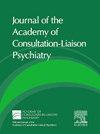系统回顾第二代抗真菌药物的神经精神毒性,并附一例说明性病例报告。
IF 2.5
4区 心理学
Q2 PSYCHIATRY
Journal of the Academy of Consultation-Liaison Psychiatry
Pub Date : 2025-05-01
DOI:10.1016/j.jaclp.2025.03.001
引用次数: 0
摘要
背景:第二代三唑类抗真菌药物是一种广谱抗酵母菌、霉菌和二形真菌的药物。这些药物包括伏立康唑、泊沙康唑和异唑康唑。伏立康唑可能引起神经精神毒性,如幻觉。然而,关于泊沙康唑和异唑康唑的神经精神毒性,文献仍然很少。目的:报告1例泊沙康唑和依舒康唑三唑类抗真菌药物致神经精神毒性,并对第二代三唑类抗真菌药物的神经精神毒性进行系统综述。方法:系统检索Medline电子数据库,使用MeSH标题和等效术语对第二代三唑类抗真菌药物、谵妄、幻觉和神经毒性进行检索。相关记录的选择由两名独立的审稿人完成。包括流行病学研究、观察性研究和病例报告。结果:系统评价共纳入20篇文章,包括11篇病例报告和9项观察性研究。所有观察性研究都与伏立康唑的神经精神毒性有关,尤其是幻觉;估计发生频率从13.9%到24%不等。第二代三唑类抗真菌药物神经精神毒性的推测机制包括破坏大脑中的胆固醇稳态,抑制视网膜细胞中的瞬时受体潜能美拉他汀1,以及药物诱导的磷脂沉积。这些药物的超治疗血药浓度以及药物相互作用也可能涉及。结论:在本研究中,据我们所知,我们首次报道了一例可能与后斯康唑和异唑康唑相关的神经精神毒性患者。在一项系统综述中,我们确定了涉及第二代三唑类抗真菌药物神经精神毒性发展的各种机制。然而,它们仍有待广泛调查。本文章由计算机程序翻译,如有差异,请以英文原文为准。
Systematic Review of Neuropsychiatric Toxicity in Second Generation Antifungals With an Illustrative Case Report
Background
Second-generation triazole antifungals are extended-spectrum drugs that act against yeasts, molds, and dimorphic fungi. These agents include voriconazole, posaconazole, and isavuconazole. Voriconazole may cause neuropsychiatric toxicity such as hallucinations. However, regarding neuropsychiatric toxicity related to posaconazole and isavuconazole, the literature remains poor.
Objective
The present study reports a case of neuropsychiatric toxicity induced by posaconazole and isavuconazole triazole antifungals as well as the results of a systematic review on neuropsychiatric toxicity related to second-generation triazole antifungals.
Methods
A systematic search of Medline electronic databases used MeSH headings and equivalent terms for second-generation triazole antifungals, delirium, hallucinations, and neurotoxicity. The selection of relevant records was performed by 2 independent reviewers. Epidemiological studies, observational studies, and case reports were included.
Results
A total of 20 articles were included in the systematic review, comprising 11 case reports and 9 observational studies. All observational studies were related to voriconazole neuropsychiatric toxicity, particularly hallucinations; the estimated frequency of occurrence varied from 13.9% to 24%. Putative mechanisms of second-generation triazole antifungals neuropsychiatric toxicity include a disruption of cholesterol homeostasis in the brain, an inhibition of transient receptor potential melastatin 1 in retinal cells, and a drug-induced phospholiposis. A supra-therapeutic blood concentration of these agents as well as a drug interaction could also be involved.
Conclusions
In the present study, we reported for the first time, to our knowledge, a patient presenting with neuropsychiatric toxicity potentially related to posaconazole and isavuconazole. In a systematic review, we identified various mechanisms involved in the development of second-generation triazole antifungals neuropsychiatric toxicity. However, there remains to be extensive investigation.
求助全文
通过发布文献求助,成功后即可免费获取论文全文。
去求助
来源期刊

Journal of the Academy of Consultation-Liaison Psychiatry
Psychology-Clinical Psychology
CiteScore
5.80
自引率
13.00%
发文量
378
审稿时长
50 days
 求助内容:
求助内容: 应助结果提醒方式:
应助结果提醒方式:


